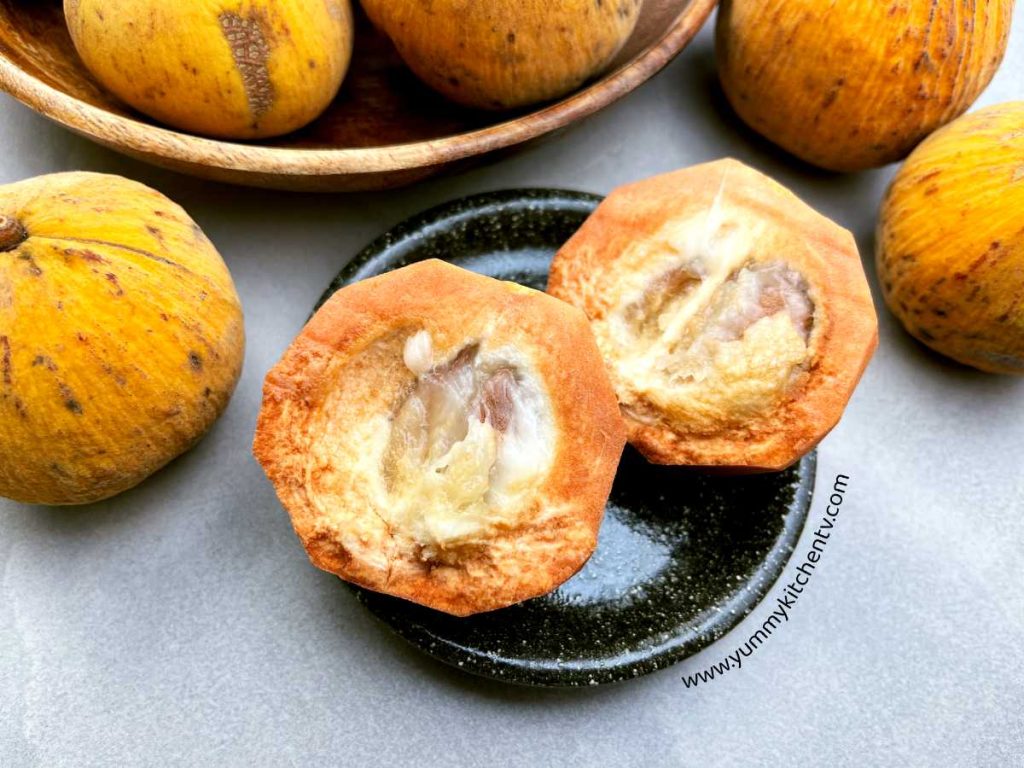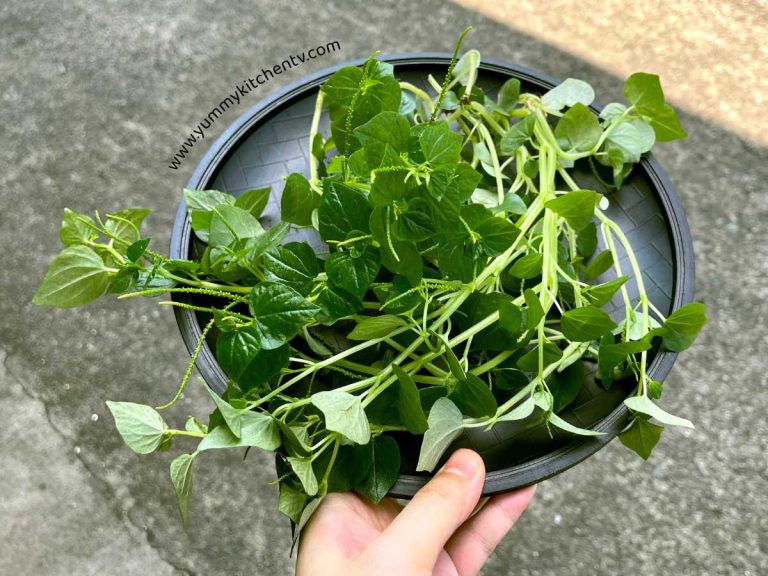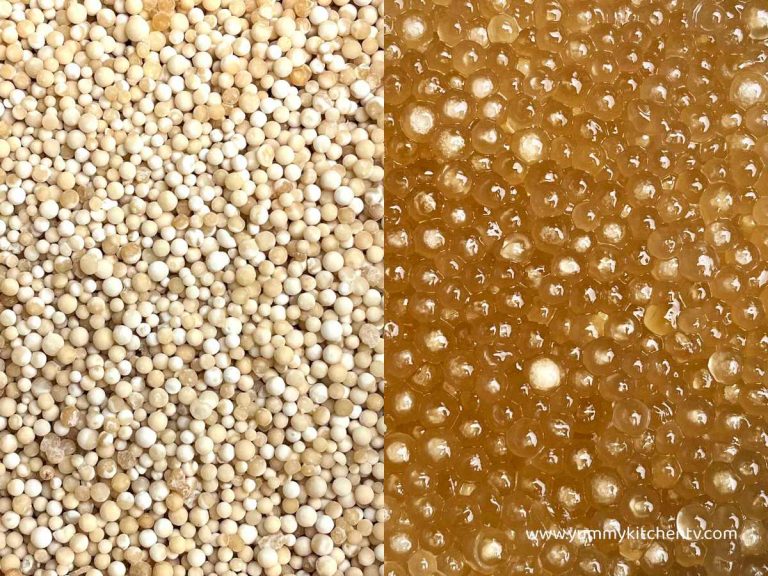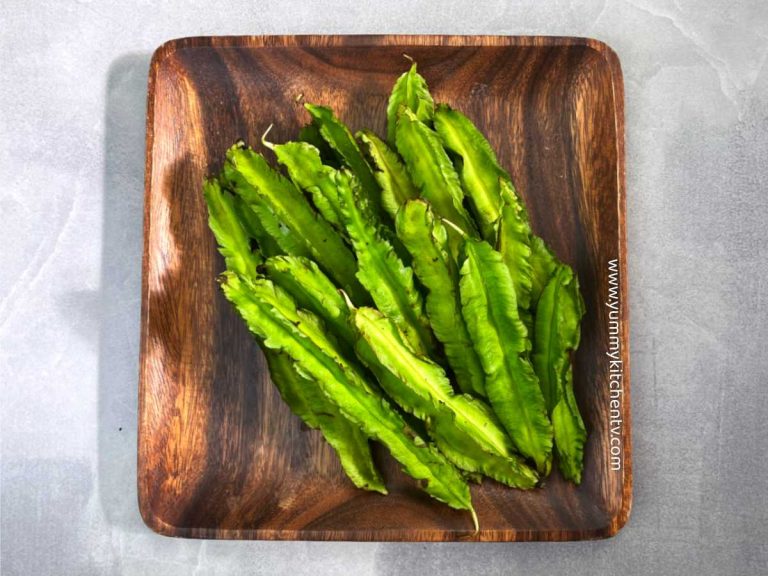Santol (Cotton Fruit)
The Santol fruit or in English ‘Cotton fruit’ (scientific name Sandoricum Koetjape) is a tropical fruit native to Malesia, also known as Maritime Southeast Asia. Abundantly found in local markets or groceries stores during its peak season from July to September. This apple sized round fruit is yellowish brown in color, with a pulp that has a cotton-like consistency, thus the name which it’s called. The fruit changes its taste depending on the maturity, from being sour to sweet. An exotic looking fruit that’s high in carbohydrates, a fair source of Vitamin B and Iron making it not only yummy but beneficial to the body.
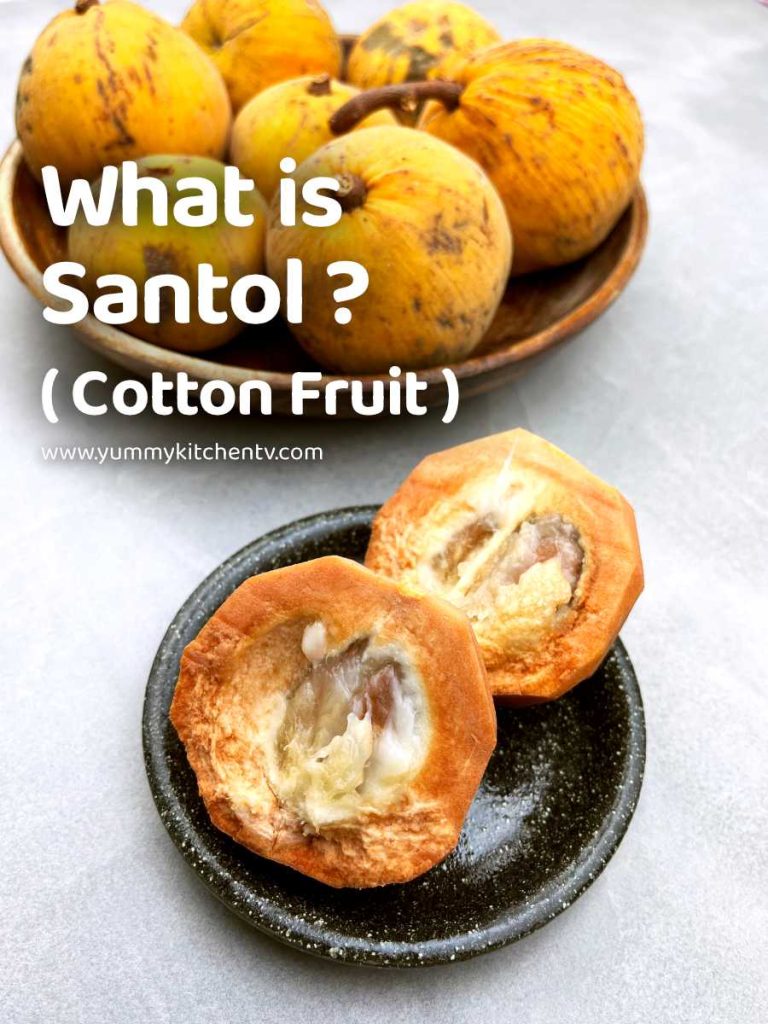
A short Introduction
The Santol is an exotic fruit native to the Malayan Peninsula and Indochina. You might be more familiar with its other names like Cotton fruit, Lolly fruit, Wild Mangoosteen, Sayai, or Visayan. They belong to the Mahogany Family, Maliaceae. A fast growing tree that reaches 150 feet in height. It is harvested by hand, though climbing or using a long stick with a forked end to twist the fruits off.
Available from spring to fall; These are climacteric, which means they will still ripen after being plucked from the tree. It bears 2 types of santol fruit, the red and yellow varieties. The red or brownish-yellow, like the color of a ripe peach, is the most common; has a thicker rind, less pulp around the seeds, and is more sour. The yellow, being a mix of pale yellow and a hint of green, is sweeter with a thinner rind. The fruit is about the size of an apple, round in shape, with an edible sweet and sour fuzzy white pulp similar to the mangosteen, it has a velvety textured skin but thicker. There are also 3 to 5 inedible seeds from the fruit, these should not be eaten as they may cause damage to the intestines. Instead, these seeds are used to make an extract to create insecticide. It has a mild peach with a hint of apple taste, some consider it either a bit or very sour, with an umami aftertaste that might linger on the palate.
Eaten in a multitude of ways, these are either eaten raw, with a sprinkle of salt or spices, cooked and made into marmalade, or candied. With many other uses of the tree being a natural insect repellent, constriction, or medical applications.
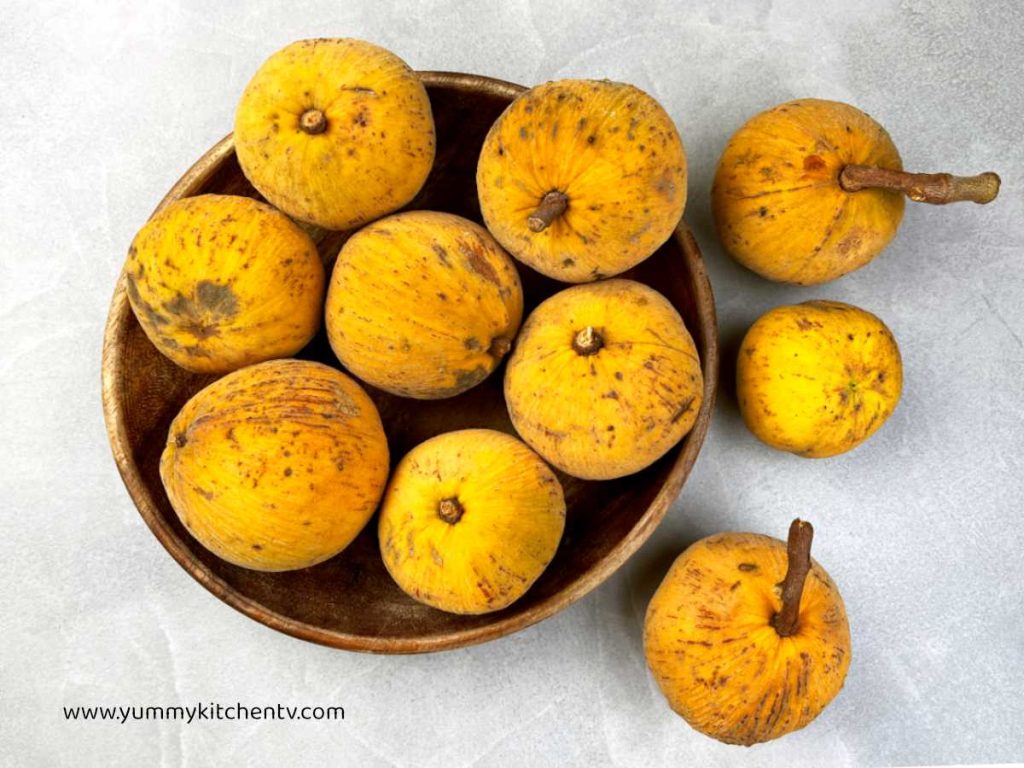
How to eat Santol (Cotton Fruit)
Opening with a knife
- Rinse the fruit under running water.
- Slice horizontally from the top, how deep? Until you can feel the blade touching the soft pulp. Careful not to slice through the pulp.
- Continue to slice around till you can pull it apart in half.
Opening with your hands
- For smaller versions, or softer skinned cotton fruits, you can press the fruit in between your hands.
- Once you’ve made a big enough crack, pull these apart to get to the pulp.
How to eat
- Gently pull the flesh off, take out the inedible seeds/pulp with your teeth.
- Suck out the juice from the seeds/pulp before discarding.
- If you do not want to only eat the seeds, another option is to separate the fruit (brown meat after peeling the skin) from the rind then eat it with sugar or salt on the side. The meat is also the part of the fruit you add into dishes to create that very sour taste.
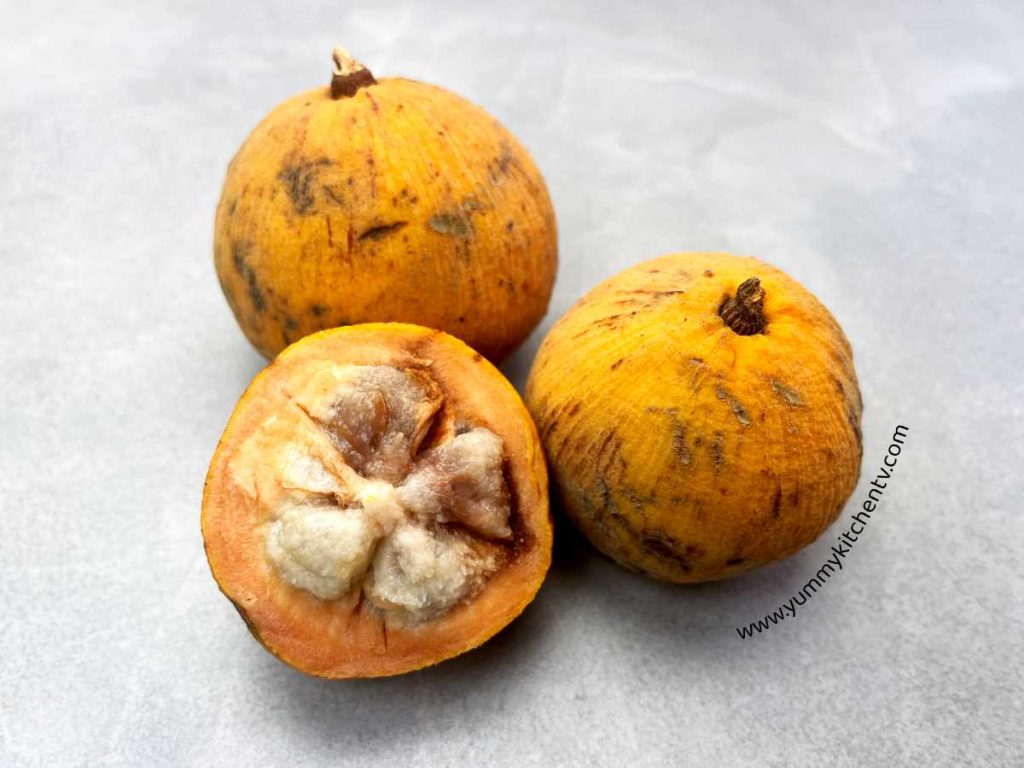
Santol benefits (Cotton Fruit benefits)
The Cotton fruit tree has many benefits; from the bark, leaves, and fruit skin, these are still used as traditional medicine by the people from Indonesia, Malaysia, Indochina, and Sri Lanka. The fruit itself is safe for pregnant women, being high in antioxidants, pectin, dietary fiber and more, here are some examples:
- Boosts Immunity and stamina, being high in antioxidants.
- Antioxidants also help to prevent the growth of cancer cells. This also fights the aging of the brain to prevent alzheimer.
- Help maintain healthy teeth. Like apples, chewing on this fruit helps stimulate salivary glands making you produce more saliva, reducing cavities.
- Help control body weight and lowers bad cholesterol, having soluble dietary fiber. Fiber also helps prevent diarrhea and constipation.
- With low cholesterol, it keeps against stroke, hypertension, and heart disease.
- Packed with iron to produce red blood cells.
Other Uses
- A natural insecticide, the bark of the santol tree can be used to repel termites.
- The bark, having sapogenin is a slightly toxic alkaloid is made into powder, and used as a natural steroid to treat fungal diseases and treat ringworm.
- In the Philippines these are used as a mosquito repellant, the stalks are turned into mosquito coils, which have no effect on humans and animals.
Santol uses in the Philippines
The santol is a popular fruit in the Philippines, used as medicine to treat diarrhea and dysentery (a severe case of diarrhea). The fruit itself is used as a vitamin to strengthen immunity and aids digestion. In the Philippines, these are eaten sour with some salt, turned into marmalade, candied, or the grated rind is simmered in coconut milk, hot pepper, with bits of pork to make ‘Sinantolan’ a dish from Southern Luzon. The meat can also be found in Sinigang to use as a souring agent. There have been recent experiments with the santol stems and barks, leading to other uses like tanning fishing nets, and as a mosquito repellant or turned into a mosquito coil.
